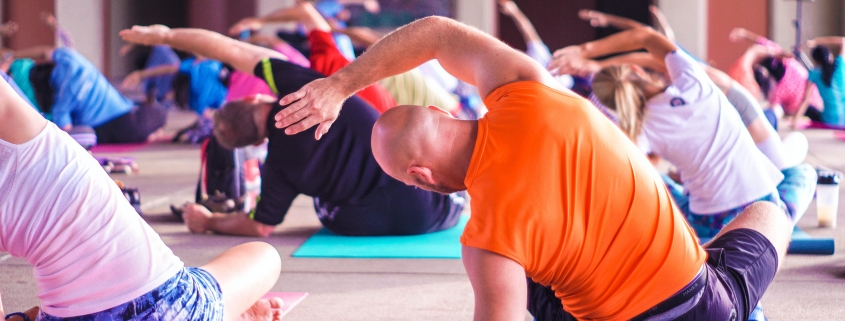Exercise is something we all know has positive health benefits when it is done in a healthy way. However, some people struggle to incorporate it consistently and some struggle with exercising excessively or in a disordered way. Choosing exercises you think you “should” be doing rather than movement that brings you joy and energy can create a negative relationship with exercise or an inconsistent pattern. Shifting to Intuitive exercise, or Intuitive movement, can help create a healthy relationship and balanced pattern with exercise. Intuitive movement is the practice of tuning into the body to notice how it feels and engaging in the type of movement that feels best in response.
Try these 6 tips below to begin shifting to Intuitive movement.
1. Pay attention to your “Why?”
It’s common in our culture for movement to be motivated by weight loss or changing the outward appearance of our bodies. However, this type of motivation can lead to disordered eating and exercising, increased body dissatisfaction, decreased self-esteem, and decreased psychological well-being. Shifting motivation to intrinsic motivating factors, like improved health and well-being or enjoyment, can result in lower exercise anxiety, increased body satisfaction, and increased self-esteem. Focus on the benefits of exercise that have nothing to do with outward appearance or weight, like improved sleep and mood, stronger bones and muscles, cardiovascular health, and improved range of motion.
2. Find movement you enjoy.
How many times have you found yourself engaging in an exercise you hate just because you thought you “should?” How did that affect your relationship with movement and how long were you able to be consistent with that exercise? If you want movement to be a part of your lifestyle in a healthy way, then find movement you enjoy doing or that makes you feel energized. Joyful movement is something that requires you to expend energy but also gives you something positive in return. It could be a movement that is fun, like dancing, or movement you can do with a loved one, like walking or hiking. It can also be movement that makes you feel strong and energized, like yoga or lifting weights. Take time and experiment with different movements to find something that brings you joy and energy.
3. Create flexible structure with your movement routine.
Creating structure with your routine can be helpful when it is flexible and doable. If you try to do too much too soon, you can end up hurting yourself. Or if you set a goal for structure that is not attainable, you may get overwhelmed and quit. Here are some things to consider when you are thinking about how to structure a movement routine:
- What time of day might be the best time to do this movement for your schedule and energy level?
- How many days/week feels doable and not overwhelming?
- What duration of time feels doable to start with? It doesn’t have to be an hour to count as movement. You can start with 10 minutes if that feels doable.
- Keep in mind that the routine might need to shift or adjust based on the season of life or other life changes that might come up, like a change in job or work schedule.
- Be willing to be flexible if something isn’t working or doesn’t feel right and you need to try something different.
- Be willing to be flexible if something else comes up, it is okay to skip a planned movement based activity!
4. Tune into your body before, during and after.
Before you engage in any movement do a body scan from head to toe. Notice how all parts of your body feel. Do you notice any tightness or soreness? Do you notice any pent-up energy? Then ask yourself if the movement you are planning to do will feel good for your body in this moment. For example, you might have planned to do some strength training, but you notice that your muscles feel tight and sore. Maybe doing some gentle yoga would be a better choice for what your body needs in that moment.
During your movement notice how your body feels and how it is responding to the movement. If the movement doesn’t feel good in your body, consider another movement that might feel better. For example, you might begin doing a gentle yoga routine and notice a feeling of pent-up energy that needs to be released with a different movement, like dancing or lifting weights. It’s okay to switch to a different movement that feels better for your body in that moment.
After your movement do another body scan and notice how all parts of your body are feeling. Did that movement give you what your body and mind needed today? If not, think about what you might have done differently.
5. Take time for rest and recovery.
Movement is an important part of maintaining and building strength and boosting energy. And rest days are equally important to allow muscles to recover, repair, and build back stronger. Over-exercise and not allowing the body to rest can lead to muscle injury, bone stress fractures, and fatigue. Make sure to plan rest days into any movement routine.
6. Fuel your body adequately.
Movement can provide positive benefits to the body only if it is being fueled adequately each day. Engaging in a movement routine when you are not giving your body enough fuel, can result in fatigue, low blood sugar, muscle loss, bone loss, and loss of menstrual cycle. Aim to include a variety of carbohydrates, protein, and fat at each meal and snack every day, not just on days you exercise.
If you’re not sure how to fuel your body well, the registered dietitians at Balanced Nutrition Counseling can help you learn how to create balanced meals and snacks to meet your needs and support any joyful movement you want to engage in.
By Julie Mason RD/LDN









